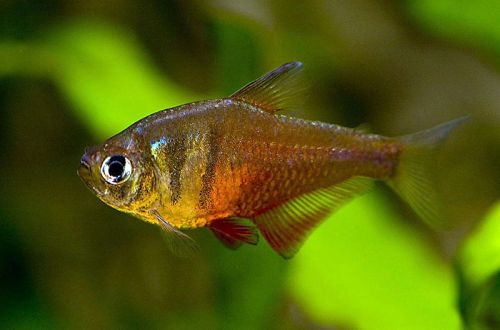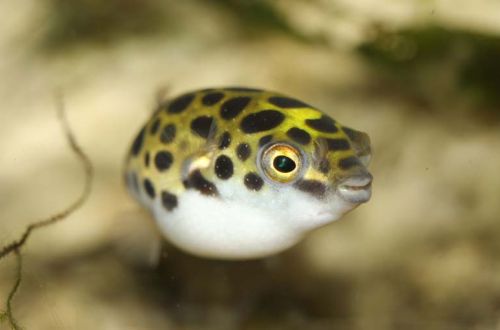
Red Tetra
The Red or Fire Tetra, scientific name Hyphessobrycon flammeus, belongs to the Characidae family. The fish shows a beautiful fiery coloration. True, in pet stores they are rather faded due to increased attention and constant stress. But once you bring them home and create a favorable environment, Tetra is filled with color again.

Contents
Habitat
The fish was discovered by researchers in 1924 while studying the fauna of South America, common in coastal rivers in eastern Brazil in the vicinity of Rio de Janeiro. Fish prefer small rivers, streams or backwaters with a weak current. In nature, they live in packs. They feed on worms, small insects and crustaceans, as well as plant products.
Description
The Red Tetra is modest in size and rarely exceeds 4 cm in length in an aquarium. The body shape is typical for tetras – high and laterally compressed, large anal fin, stretching from the middle of the belly to the tail.
The front of the body is silvery, starting from the middle it turns red. Especially deep and rich shades on the back and base of the fins. Two vertical dark stripes are clearly visible behind the gills.
Food
It belongs to omnivorous species, gladly accepts any high-quality dry food (flakes, granules). It is recommended to use live food or meat products such as bloodworms, large daphnia, etc. However, if the dry food contains protein supplements, then meat products are not necessary.
Maintenance and care
Fish are distinguished by endurance, adapt well to various conditions. However, the optimum condition and maximum color are acquired only in soft, slightly acidic water, therefore it is recommended to use a filter with a peat-based filter material. Water is required very clean, a water change of 30-50% every two weeks can help the filter. Other equipment – heater, aerator, lighting system, low intensity.
The design should use dense thickets of plants located in groups along the walls of the aquarium to leave free space for swimming. The presence of places for shelters is mandatory, they can be made from artificial snags, grottoes, etc., the soil is sandy. Adding a few dry leaves will turn the water a light brown color, bringing the aquarium closer to natural conditions in the wild. Leaves should be replaced every two weeks, which can be combined with a change of water.
Social behavior
Very timid appearance, prone to stress from increased attention and active neighbors. Compatible with small fish with a calm behavior, in no case should be kept together with large species. The Red Tetra prefers a group of 6 or more individuals, in which case they feel more secure.
Sexual differences
Males are larger and have a brightly colored anal fin, in females it is pale sometimes yellowish.
Breeding / breeding
Ease of breeding makes this species a favorite of many aquarists. Since the parents do not take care of the offspring and may even eat the eggs, breeding should be done in a separate aquarium.
A spawning aquarium from 20 liters is quite sufficient. It should be densely planted with plants, including those with broad leaves. A substrate of 1 cm balls or a similar size of gravel. Equipment – aerator, heater, lighting system with dim light, filter, where peat is used as a filter material. The water parameters are similar to the general aquarium.
The beginning of spawning is the inclusion in the daily diet of live food, such as bloodworms. After some time, the courtship process will begin, the males are filled with color and circle around the females. A guaranteed effect is achieved in a group of 12 individuals – 6 males and 6 females.
The resulting pair is placed in a spawning aquarium, where the female lays eggs on the leaves of plants, the fallen eggs roll between the particles of soil and become inaccessible to the parents, this saves them from being eaten. At the end of spawning, the parents are placed back. The fry appear on the second day, and after 3-4 days they begin to swim freely in the tank. Feed with special microfood sold in pet stores.
Diseases
In an aquarium with clean water and appropriate pH and dH parameters, there are no health problems. Read more about symptoms and treatments in the Aquarium Fish Diseases section.





